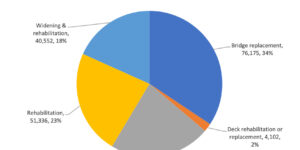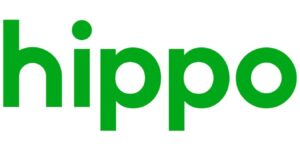Name, address, and email or website.
Those are the bits of information that InsurTech data provider NeuralMetrics needs to deliver a classification code and risk insights about small businesses to commercial insurance carrier partners. And the company is currently processing such insights for 50,000 businesses per month on average for the likes of Nationwide and Chubb, according to Chief Executive Officer Prakash Vasant.
The number of businesses, however, isn’t what Vasant will point to when asked what sets his company apart from similar InsurTechs working on the problem of creating a small business risk profile for a carrier presented with the opportunity to write workers compensation or other commercial insurance policies but given only limited information to fully understand the risk.
“We give a complete profile, all done in real time—in less than 15 seconds,” he said during a recent interview with Carrier Management, stressing the time element. “It had to be real time because we didn’t want any stagnant data.”
Transparency is another key differentiator for NeuralMetrics, according to Vasant. “If you are classifying a business or if you’re answering a question ‘yes,’ you should be able to precisely say why we are answering this question a yes,” he said, noting that the why means “exactly pinpointing” the source data with a link to supporting information.
In an article he authored for an online publication, Vasant gave the example of a question about whether or not a restaurant delivers food—a common application question from insurers of those small businesses (“The Need for Transparency in Underwriting,” Oct. 18, 2022, published by Insurance Thought Leadership). In the example, he assumed that the restaurant entrusts its delivery tasks to a third party, such as Uber Eats. An insurance carrier, presented with a factually correct “yes” to the delivery question from a data provider, may decline the risk, losing a potential business customer that, in fact, is eligible for coverage from this carrier because it does not have its own staff delivering its menu items.
That is something that is discoverable on the NeuralMetrics SmartRatio platform, which provides a link to the source of the delivery information clarifying the situation.
“Transparency is the key for us, and that’s going to be the basis of all our future projects on which we work. And it’s not just the data. Even as an organization, we are transparent,” Vasant said. “When we say we are transparent, we say either we can find this data or not…We can do this project or not. We are trying to build that into our culture across the organization.”
By being frank with carriers about exactly what NeuralMetrics can deliver, rather than offering empty promises, Vasant believes he is building a foundation of trust.
Still, NeuralMetrics does promise to deliver something else that other vendors with out-of-the-box solutions don’t offer: customization. “We can’t treat all carriers the same. Every carrier is going to be unique based on their experience, based on their books—[or] the way they look at the models or configuration of the questions,” he told Carrier Management.
“Even when two underwriters are looking at a risk, it’s a little bit subjective at some point in time in terms of whether you want to classify this as a restaurant or a bar,” for example, he said, referring to a real-life situation that became apparent during a weekly meeting with a carrier customer. NeuralMetrics was classifying a business as a restaurant. The carrier said it was a bar. A link to the source of NeuralMetrics information revealed that the restaurant was open past 11 p.m. “That has to be a bar for us,” the carrier said, voicing an underwriting rule specific to that particular carrier.
“That’s a classic example. That’s where the transparency helps us—and collaboration,” Vasant said. “Sometimes [carrier underwriters] might say, ‘Hey, we are not finding a business, or we are not understanding a question. Can we re-tune the question?'”
Similarly, a carrier may be asking the question, “What is the percentage of liquor sales?” According to Vasant, “You may never be able to get that data anywhere in the public data.” So, NeuralMetrics will work with the carrier to agree on a question that will be helpful that can be answered by combing the Internet. “Do you sell liquor?” is one potential substitute that provides a good start for the carrier along these lines.
NeuralMetrics has a prebuilt set of questions for each business segment to understand the quality of the risk. “The [carrier] customer might say, ‘This is not good enough based on our experience. Here are an additional four or five questions that you need to help us configure.” Said Vasant, “If the data is available that we can find on a consistent basis, and if we are confident that we can meet our internal threshold of minimum 75 percent that [we] will be accurate, and 70 percent of the time [we] will get the data, we start building those models for those specific risk insights for them.”
He continued: “Whatever we build for each of the Tier 1 carriers is unique to them. We don’t share that data with any of the customers.”
 “Quite literally, every week there is a meeting going on with the carrier partners with whom we are in live production. There’s constant feedback coming in from them.”
“Quite literally, every week there is a meeting going on with the carrier partners with whom we are in live production. There’s constant feedback coming in from them.”
Prakash Vasant, NeuralMetrics
Offering another example of customization, Vasant said that one carrier really might like information from Facebook as a source of data to answer underwriting questions, requesting that NeuralMetrics give Facebook a higher confidence index in its customized model. Others might not like Facebook at all, directing Vasant’s team to give it low confidence or even to exclude Facebook information entirely.
“Quite literally, every week there is a meeting going on with the carrier partners with whom we are in live production. There’s constant feedback coming in from them,” he said. There’s a collaboration happening and improving the process, improving the data sources—and ultimately that can improve hit rates and accuracy.
Tony Fenton, vice president of Commercial Lines Underwriting & Product at Nationwide, confirmed this during a separate interview. “Our automation and underwriting teams are working hand in glove with [NeuralMetrics] on a weekly basis,” he said. “From a strategic perspective, a number of times throughout the year, I meet with Prakash and his leadership team to talk about product road map, visioning, where Nationwide is—because I think that one of the benefits of a relationship with a firm like Neural is we’re growing together. What needs or challenges do we see on the horizon and how might we imprint those upon NeuralMetrics?”
“I feel that sort of conduit of a conversation, leader to leader, is important. But I also really appreciate the day in and day out where our teams are working together to create the best possible outcome for our underwriting system,” Fenton said.
How NeuralMetrics Began
Leading NeuralMetrics represents Vasant’s first foray into the world of insurance, and commercial insurance underwriting, in particular. He started his career as a currency exchange dealer trading with banks in India, and then built a platform for corporate houses in India. “I exited that business and started an IT services business in 2000. That brought me into the U.S. I did that for about 15-plus years and realized that data is becoming more and more critical for all the businesses while I was consulting as part of my IT services business.” With a simple goal “to start something in data,” his journey to start up NeuralMetrics began.
As he and his teammates started looking out for opportunities to build something around data, they became excited about the availability of public, unstructured data. “People are always really looking at the structured data, which is internal data, or whatever they get from third-party data. But I saw a lot of value in the unstructured data, which is government, which could be the websites or social media. There’s a lot of information [that] people push out today that’s more real-time and more accurate, I feel, compared to the historical or the structured data that we have…And the best part: The technology was getting better and better. We wanted to capitalize on that.”
After dabbling with banking applications, in particular, experimenting with a Know Your Customer use case for banks, “we came to know about this insurance [problem] through a common friend of ours…Chubb was trying to solve the two-question underwriting. That’s how we started our journey.”
The primary goal involved building out risk insights to profile individual businesses: “Can I understand more about this particular [small] business? Do you sell liquor? Do you have a dance floor?”
Vasant continued: “In the process, we realized classification was becoming more and more critical because there are certain nuances when you’re trying to answer a [common] question, such as a question [about] insulation. For a services company, the risk profile is different, and how we approach that [insulation] question is different compared to manufacturing. So, we got into classification,” he said, referring to the fact that the first insurance underwriting product offered by NeuralMetrics, SmartRatio, returns NAICS and other class codes, based on name, address, and email or URL inputs. (Editor’s Note: SmartRatio is just a name. There is no insurability ratio output from the product, Vasant confirmed.)
Vasant agreed that there can be more than one source of information to answer underwriting questions, like the one about liquor sales. Which one does NeuralMetrics use? The source that has a higher confidence rating, he said, noting, for example, that information coming from a company-owned website will have a higher rating than a third-party site—and that confidence ratings are also tied to customer preference and past experience in working with different sources. NeuralMetrics might say to the customers, “We are 90 percent confident because here is the data source we brought in, but more importantly, here is the snippet that made us to get to this particular conclusion.”
Asked to describe a situation when an underwriter might typically be motivated to click on the link to view the transparent source, Vasant said this occurs when the confidence level is likely on the lower side—below 70. “That’s when we refer to the underwriters to say, ‘Hey, here’s the data where we are not too sure about [it]. Please review it before you accept the policy.”
Noting that NeuralMetrics is live for two customers today that have tested the data extensively, Vasant said that for over 70 percent of the queries, “when we are confident, it generally is a straight-through process. They just let it go through.”
Offering another reason for the links and transparency, he added, “We definitely do see compliance is going to be more and more critical,” referring to state-specific laws and insurance regulations around data use and online privacy. “Compliance people want to know where you got the sources—how you got this data,” he said.
Listening to Customers
Beyond feedback about fine-tuning questions, Vasant said two of the most important insights he got from listening to potential customers, which helped to influence product development, were about customization and about the role of the underwriter.
“We tried to start off with a standardized product…But as we started working with Tier 1 carriers, we realized the standardized would not work. Everybody’s going to come with their own uniqueness. Everybody’s going to have their own sort of approach to a risk and to the questions.”
Recalling the second insight, he said that carriers do not want to replace their underwriters with technology. “The goal was, ‘How do we automate the process on a consistent basis—at speed, accurately—and give the data to underwriters with complete transparency?'” he said, noting that one carrier, in particular, required that whatever data NeuralMetrics brought had to be transparent.
Beyond submission prefill and underwriting, the market material for the NeuralMetrics SmartRatio product also identifies use cases such as portfolio management, premium audit and book roll evaluation. Vasant said the portfolio piece was another product of interaction with the carriers.
“When we started, it was done on new business, primarily. So, each time you submit a name and address. It was done on a per-query basis.” But carriers started asking, “Can we bulk upload the [book of] business into your system? And can you tell me how much of this is in appetite, out of appetite? How many of these risk questions did we miss? How much of these are misclassified? How much of more information can you give us?”
That led to conversations about the renewal books and portfolio management. Today, carriers upload their books or segments of their books to the platform to answer those questions.
According to Vasant, pricing is on a per-query or a per-risk basis to keep it easy to calculate. There’s a lot of work involved on the carrier side when it’s premium-based pricing, he said. “On a per-query basis, it’s very simple. You ran so many businesses. We found a hit. So, pay for it. If there is no find, don’t pay for it. That’s something we are willing to take a risk [on] at our end in our pricing model, and we give them,” he said.
MarketEdge
In September, NeuralMetrics announced the launch of a new product in addition to SmartRatio—MarketEdge—describing the newer offering as “an AI-powered platform to research and filter U.S.-based businesses and markets, prequalify leads, and attain desirable insurance customers.”
“Additionally, the solution evaluates the propensity of businesses to change insurance providers in upcoming renewal cycles,” NeuralMetrics said in a media statement.
Vasant explained that MarketEdge is currently available for workers compensation only but that NeuralMetrics plans to extend this lead generation platform to include additional commercial lines in the future. Essentially, the rollout combines SmartRatio information with workers comp data that NeuralMetrics has access to from certain states, identifying policies that are set to expire within the next 90 days.
Integrating this with the SmartRatio system allows NeuralMetrics to go beyond just supplying the intel that a policy is expiring. “The goal is to create a funnel to say to a carrier, ‘Here are the risks that you want to write in, let’s say in the contracting business.’ So, I can pull out all the contracting businesses that are expiring—that are coming for anywhere in the next 90 days. We have identified that. Then we run it through our SmartRatio platform to answer, ‘Are they in appetite?'” Or maybe there are certain contracting risks the carrier doesn’t want to write, he said, giving examples like outdoor painters or contractors that work over a three-foot elevation. “Can we find those answers? If there is a ‘yes,’ we start eliminating that. If there’s a ‘no,’ we pull together a list…”
“The goal is to give a carrier everything prequalified,” which the carrier can then take and act upon or supply to an agent with the instruction, “I’m willing to write this particular business at this particular price.”
The funnel starts with an appetite filter and then refines the list based on experience modifications, tenure with an incumbent and loss cost multipliers, according to a graphic demonstrating how the product works on the NeuralMetrics website. That information is all publicly available, Vasant confirmed, noting that it’s part of the state workers comp datasets to which NeuralMetrics has access.
“You can get that data. That’s the goal of reducing the funnel, right? If a business has been switching carriers every year, they may not be a good business for you to write,” or maybe it’s one the carrier should aim to price too aggressively. “But if they’ve been consistent for three or five years, that’s a good business to go aggressive on your pricing.”
Taking Stock
Asked how he measures the success of his young business, Vasant first points to the number of queries coming through the SmartRatio engine, also setting goals based on the same metric. Referencing the fact that queries from about 50,000 businesses are being run through the engine today, NeuralMetrics aspires to have that move to a million or 3 million next year.
A second goal is for each carrier to report an increase in business or profit as a result of using SmartRatio or MarketEdge, he said, putting a view of pre-NeuralMetrics and post-NeuralMetrics carrier financial results on his personal wish list. “It’s just been a year now that we started in real production with these carriers,” he noted.
When asked whether the company had any notable technology partnerships to share, Vasant confirmed that NeuralMetrics aims to build out its partner ecosystem next year. A few days after our interview, the company jointly announced a partnership with Duck Creek Technologies to offer carriers using Duck Policy API access to NAICS code prefill for risk assessment.
What about the prospect of moving beyond providing data for the small business insurers to those carriers interested in larger commercial accounts?
Vasant confirmed that middle-market business is on the radar screen.
Unlike the situation in the small business space, where data is limited, “the problem with the middle market is there is a lot of data available now. How do we weed the noise out from a lot of data that’s coming out to ensure that we still [deliver] the same accuracy and same consistency?”
“We are already in talks with carriers” to understand their needs, he said. “The best part about mid-market is, unlike small business, it’s not going to be a straight-through. The carriers are going to touch the business,” he said, eyeing a goal of giving an underwriter that is spending a day or half a day collecting information about a particular business a way to get that information within 15 seconds—and with a class code and clickable links for transparency, as NeuralMetrics is doing with small businesses.
“The underwriters shouldn’t be focusing on collecting the data. They should be focusing on working with partners and closing the business.”
Like other data and technology providers interviewed for this series of articles on the future of commercial insurance underwriting, Vasant doesn’t see AI supplanting underwriters’ business know-how. “The goal is not to eliminate underwriters. The goal is to take the underwriters to the next level to say, ‘OK, you’ve got all this data, now can you close the business—work with your agents, or work with the business or the sales team to see how [you] can write this business…”
“That’s how I see the underwriter is evolving, moving closer to the business side more and more, and not on [working] on the back end, collecting the data.”
“At least in the next year or two, it should start evolving in that way,” he said.





















 New Hampshire High Court Invalidates GEICO Underinsured Claim Provision
New Hampshire High Court Invalidates GEICO Underinsured Claim Provision  Insurance Ranks in the Top 5 Most Affected Industries When It Comes to Identity Fraud
Insurance Ranks in the Top 5 Most Affected Industries When It Comes to Identity Fraud  Mitigating Flood Risk 10x More Cost Effective Than Rebuilding: Swiss Re
Mitigating Flood Risk 10x More Cost Effective Than Rebuilding: Swiss Re  More Than Half of All Employees in Finance, Insurance Work Remotely: Triple-I
More Than Half of All Employees in Finance, Insurance Work Remotely: Triple-I 





